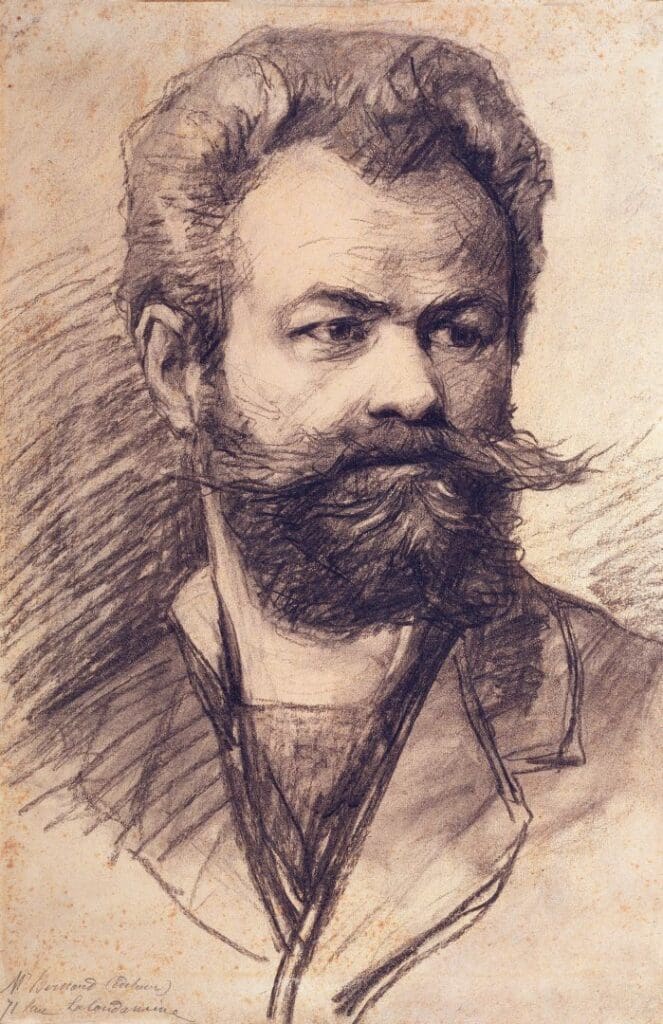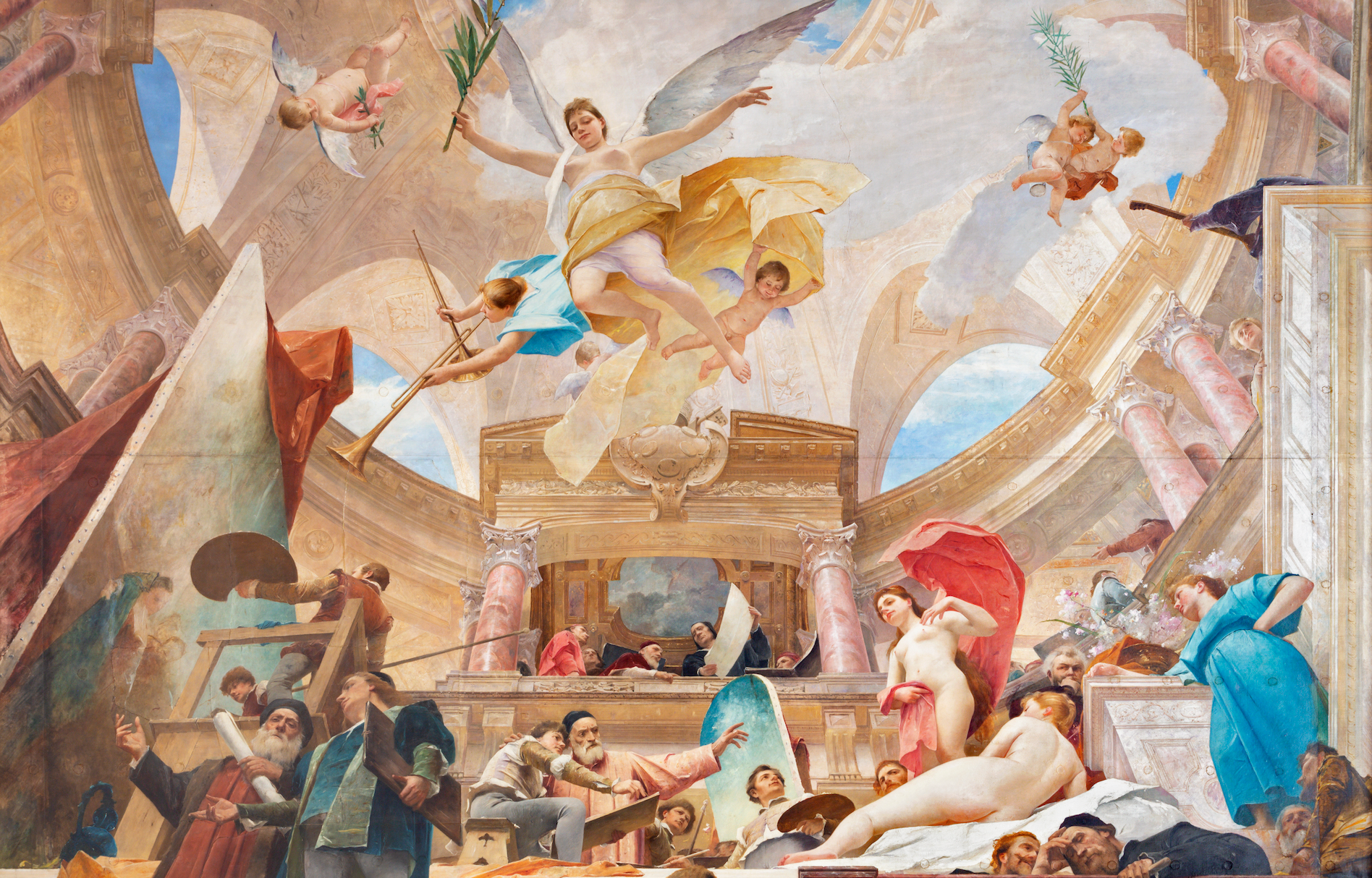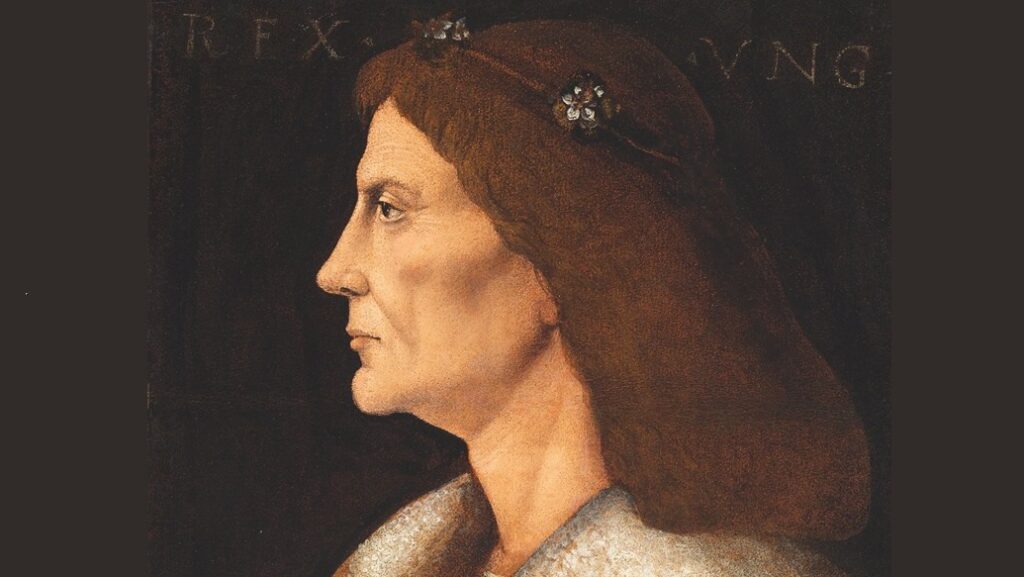Mihály Munkácsy (20 February 1844–1 May 1900) is one of the best-known Hungarian painters. He was born as Mihály Leó Lieb, but in 1868 he changed his surname to Munkácsy after his birthplace Munkács (now Mukachevo in Transcarpathia, Ukraine). In 1850, he lost his mother, and two years later, when he was only eight years old, his father died, too. Orphaned, he was brought up by his uncle, who was constantly on the run due to the role he played in the Hungarian Revolution of 1848, and therefore could not properly take care of the boy. As a result, Munkácsy worked for carpenters from the age of 10, living in severe financial deprivation, on the brink of starvation. After working 14 hours a day for many years, Munkácsy fell seriously ill and returned to his uncle’s care. During his recovery, his uncle noticed his talent and enthusiasm for painting and drawing, so he managed to get his nephew an apprenticeship with the Hungarian portrait painter Elek Szamossy. After two years of art studies, Munkácsy moved to Budapest, where he finally received financial support to start his artistic career.
He departed from the folk genre to ‘Salon paintings’ and became one of Paris’ favourite painters
In contrast to contemporary impressionists, he followed his own style, and was inspired mostly by Gustave Courbet and Rembrandt. His eccentricity bore fruit in 1869, when he gained international recognition at the age of 26 after his painting The Last Day of a Condemned Man (Siralomház) was exhibited in Paris. In 1871, he moved to Paris, but due to lack of self-confidence in his artistic talent, he attempted suicide. After recovering from his unsuccessful suicide attempt, he married the Luxembourgian socialite, Cecile Papier. With a change in his artistic style, he departed from the folk genre to ‘Salon paintings’ and became one of Paris’ favourite painters, as well as one of the highest paid artists of the time. After a few decades of hard work, he overcame childhood traumas and starvation and became the ‘Painter-Prince’ of his time.

At the peak of his career, in the 1880s, having accumulated plenty of experience, Munkácsy decided to paint his famous Christ Trilogy. The first painting of the trilogy, Christ before Pilate, was completed in 1881, and the second, Golgotha, in 1884. The last and best-known piece of the trilogy, Ecce Homo (‘Behold the Man!’—Pontius Pilate’s words to the crowd seeing Christ with a crown of thorns on his head), was finished in 1895 after six years of tireless work. The goal of the trilogy was to produce a realist representation of Christ’s suffering as an ordinary man. The paintings show a wide range of human emotions, which all intensify the works’ psychological tension. Depicting, understanding and reliving human suffering is core to the Christ Trilogy. In 2019, after decades of legal battles, the Hungarian state managed to purchase all pieces of the trilogy, which are now exhibited in Debrecen, Hungary.
Munkácsy was invited to work on a painting for the Hungarian Parliament
In 1892, Munkácsy was invited to work on a painting for the Hungarian Parliament. Depicting the events of the Hungarian conquest of the Carpathian Basin in a realistic style required Munkácsy to carry out extensive background work before he started painting the Conquest, on which he worked for two years. During that time, he visited many historic sites connected to the settling of the Magyar tribes, immersing himself in archaeological and anthropological studies for a better understanding of early Hungarian history. In 1894, Munkácsy completed the painting, which today decorates the wall of the upper chamber of the Hungarian Parliament. However, the Painter Prince’s restless work soon took its toll—his illness returned, and Munkácsy died in a mental hospital in 1900.
Related Articles:








